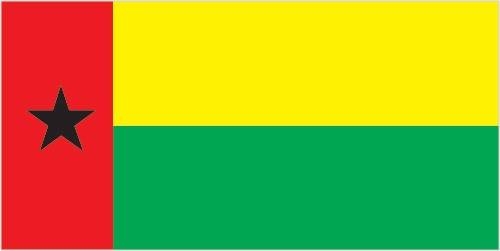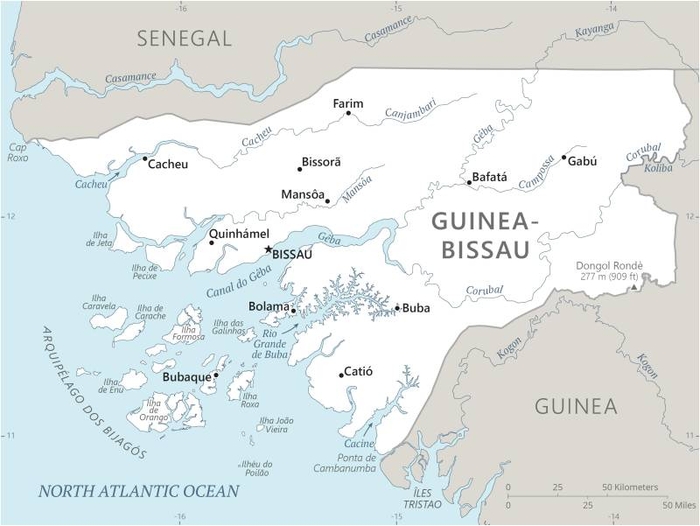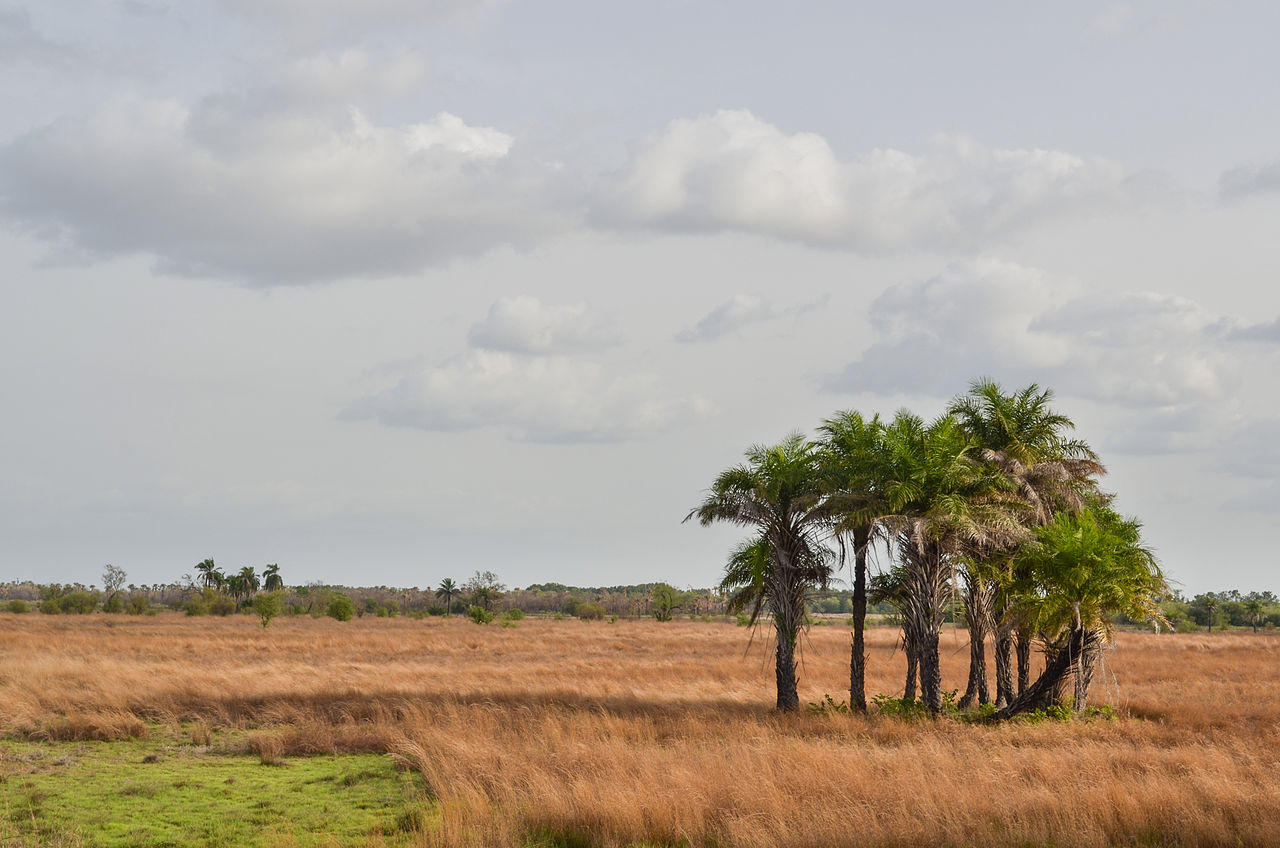201 Guinea-Bissau

Two equal horizontal bands of yellow (top) and green with a vertical red band on the hoist side. There is a black five-pointed star centered in the red band. Yellow symbolizes the sun. Green denotes hope. Red represents blood shed during the struggle for independence. The black star stands for African unity.
Flag courtesy of the CIA World Factbook

Map courtesy of the CIA World Factbook

Typical scenery in Guinea-Bissau
Government
According to Britannica, Guinea-Bissau’s constitution, promulgated in 1984, has been amended several times. Under the constitution, Guinea-Bissau is a republic. Executive power is vested in the president, who serves as the head of state and government; the prime minister; and the Council of Ministers. The president is popularly elected to serve a five-year term and governs with the assistance of the prime minister, whom he appoints. The legislative branch of government consists of the unicameral National People’s Assembly; members are popularly elected to four-year terms. A new constitution was adopted by the National People’s Assembly in 2001, but it was not promulgated.
The country has experienced several coup attempts, some of which have been successful in toppling the government in place at the time. The most recent military coup took place in April 2012. A transitional government was established the next month, tasked with the goal of restoring a regular civilian government within one year. After some delay, a democratically elected government was installed in June 2014.
Guinea-Bissau is divided administratively into regiões (regions) and setores (sectors), including the autonomous sector of Bissau. The most basic unit of government is the tabanca (village) or, in towns, the neighborhood committee. During and after the liberation struggle the neighborhood committee was the basic organizational unit of the African Party for the Independence of Guinea and Cape Verde (Partido Africano da Independência da Guiné e Cabo Verde; PAIGC), initially the sole legal party for Guinea-Bissau and Cape Verde.
The judicial system is made up of the Supreme Court, Regional Courts, and Sectoral Courts. The Supreme Court, which consists of nine judges, is the final court of appeal. The Regional Courts hear major cases and serve as the final court of appeal for the Sectoral Courts, which hear minor civil cases. The continued need for personnel, equipment, and facilities resources, such as judges and prisons, has challenged the efficacy of the justice sector and has made the country susceptible to organized crime activities including the trafficking of humans, drugs, and weapons.
Civil / National Aviation Authority (CAA/NAA)
None found by the author.
However, should you, the reader, happen to stumble across something to the contrary, please email the author at FISHE5CA@erau.edu and you may be mentioned in the ACKNOWLEDGEMENTS section of this book by way of thanks for contributing to this free eBook!
Airspace
SkyVector – Google Maps – ADS-B Exchange
ICAO countries publish an Aeronautical Information Publication (AIP). This document is divided into three parts: General (GEN), En Route (ENR) and Aerodromes (AD). ENR 1.4 details the types of airspace classes they chose to adopt from classes A through G.
Drone Regulations
None found by the author.
However, should you, the reader, happen to stumble across something to the contrary, please email the author at FISHE5CA@erau.edu and you may be mentioned in the ACKNOWLEDGEMENTS section of this book by way of thanks for contributing to this free eBook!
Advanced Air Mobility (AAM) Regulations & Policies
None found by the author.
However, should you, the reader, happen to stumble across something to the contrary, please email the author at FISHE5CA@erau.edu and you may be mentioned in the ACKNOWLEDGEMENTS section of this book by way of thanks for contributing to this free eBook!
Advanced Air Mobility (AAM) News
None found by the author.
However, should you, the reader, happen to stumble across something to the contrary, please email the author at FISHE5CA@erau.edu and you may be mentioned in the ACKNOWLEDGEMENTS section of this book by way of thanks for contributing to this free eBook!
Short Essay Questions
Scenario-Based Question
You have been hired by a Drone Startup Company. Your boss has immediately assigned this job to you.
They need you to prepare a one-page memo detailing the legalities of using a drone to film Bissau Cathedral in Guinea-Bissau.
They need you to mention any national laws and local ordinances.
They specifically want to know what airspace (insert pictures) you will be operating in and whether or not you need an airspace authorization.
Does it matter whether or not you are a citizen of the country?
Lastly, there is a bonus for you if, as you scroll through this chapter, you find any typos or broken links!
Short Essay Questions
- What are the drone categories?
- How is registration addressed?
- How is remote ID addressed?
- What are the model aircraft rules?
- What are the commercial drone rules?
- Are there waivers or exemptions to the rules? If so, for what?
- Would you share a link to an interactive airspace map?
- How is BVLOS addressed?
- How can you fly drones at night?
- How can you fly drones over people?
- Where do you find drone NOTAMs?
- What are the rules for drone maintenance?
- What are the rules for an SMS program?
- What are some unique rules not mentioned above?
- What are the C-UAS rules?
- What are the AAM rules?

